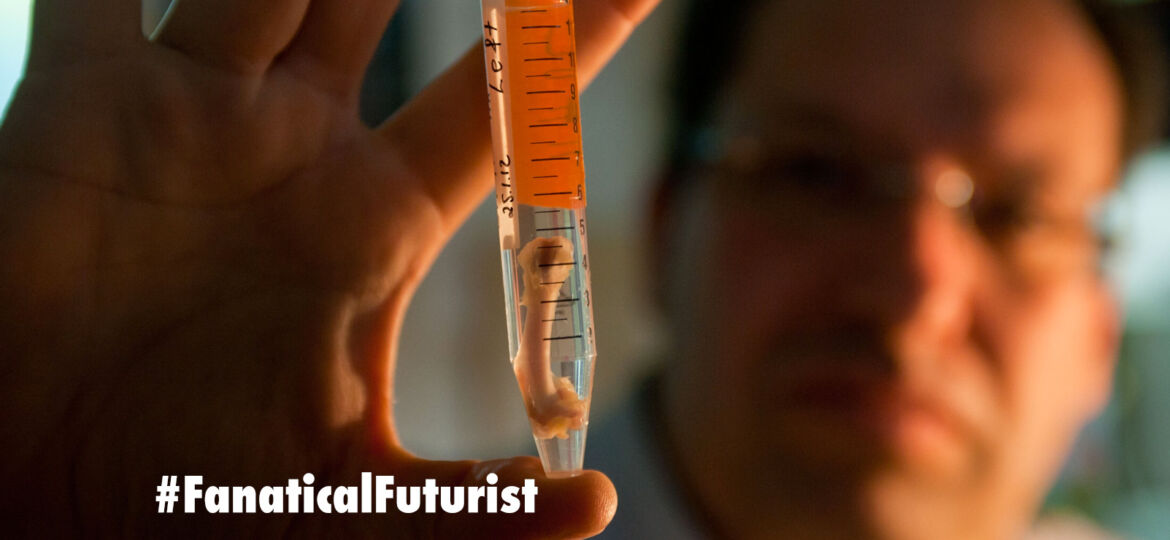
WHY THIS MATTERS IN BRIEF
When patients loose part of a bone, for example, to Cancer, often there is no way to get the bones to grow or fuse together again resulting in amputation, this breakthrough will prevent that.
Medical history was made at Emek Medical Center in Afula in Israel the other week when semi-liquid live human bone tissue grown in a lab from a 40 year old patient’s own stem cells was transplanted into his arm using nothing more than a simple injection.
The patient, who’d suffered significant bone loss in his arm as the result of a car accident had previously undergone a number of unsuccessful bone transplant surgeries, and this procedure was part of an early stage clinical trial of a revolutionary new tissue engineering technology developed by the Bonus BioGroup.
Back in December 2016 the Bonus BioGroup also announced the first successful results of another early stage clinical trial, this time on 11 patients, where bone tissue grown from a small sample of each patient’s own stem cells was injected into their jaws to repair bone loss. Over a few months the new bone tissue hardened and merged with the existing bone to complete the patients jaw, according to the company, so as a result it is also expected, but not guaranteed, that this latest trial will also be successful.
“This latest trial sets a new standard of hope for rapid healing in a wide variety of cases,” said Shai Meretzki, Bonus BioGroup’s CEO.
“The technology we developed allows us to grow a bone that is based on a patient’s biological tissue, so there is no danger that the patient’s body will reject the implant,” said Dr. Nimrod Rozen, Emek Medical Center’s Head of Orthopedic Surgery.
Bone can be damaged by a range of injuries, illnesses and medical procedures, Rozen explained.
“For example, in bone cancer located in the bones of the hands or feet, if we remove the tumour together with the bone on which the tumour is located, it usually means that we will lose a leg or hand, because although the bone has traits that allow it to grow, it will not be able to grow the distance between the bone ends we removed by surgery.”
Bonus BioGroup’s technique involves growing bone under sterile laboratory conditions from stem cells in fat tissue taken from the patient in need of the bone transplant. After two weeks the injectable bone graft is transported from the company’s lab and production facility in Haifa to the medical center performing the transplantation in a ready-to-use syringe, and over time the injected cells multiply until sufficient new bone material is created to fill the missing area.
Rozen says the injectable bone-graft technique heralds a major improvement over traditional bone grafts, a complicated surgical procedure that is not always successful and requires a long recovery process.
“The special features of the implants enable preservation of cell properties during implantation and the creation of a high-quality bone functioning in the transplanted area,” he said.
















